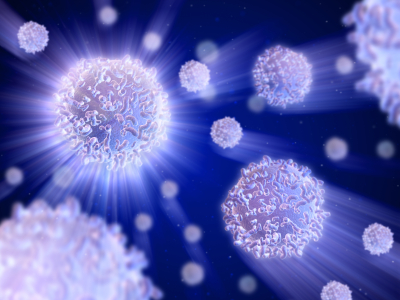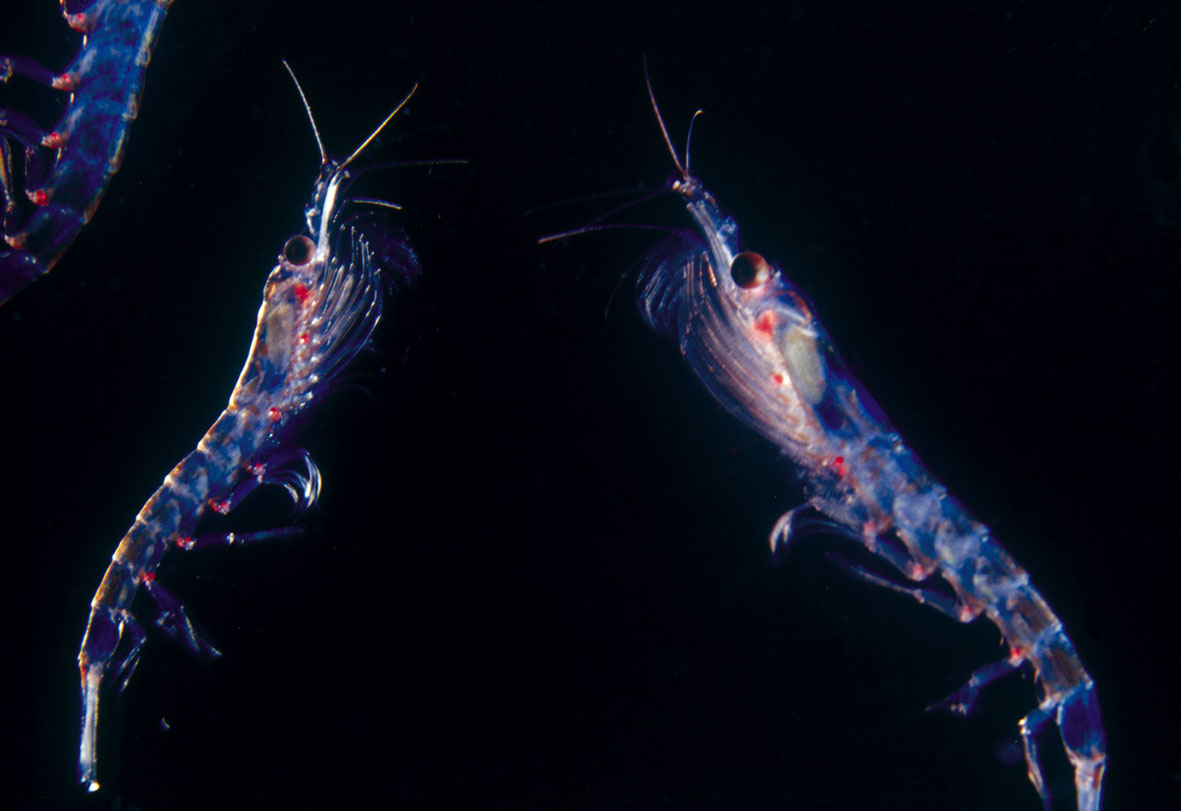Menopause? Apparently it’s in the genes…
That is what scientists are reporting in Nature Genetics. They say that when they examined studies looking the genetic code for almost 39,000 women, the discovered that the timing of menopause may very well be linked to specific genes. What’s more, three of the 13 locations of these genes were directly associated with the immune system. The other important regions are associated with cellular repair, hormones and inflammation, all of which are linked with certain things that happen as we age, e.g. increased risk of developing certain illnesses, changes in appearance, and of course, ovarian function.
The researchers say that the study suggests that there is a genetic basis for when menopause begins and that it’s even possible that over time, they may be able to take some of these learnings to figure out why some women go through menopause prematurely or have fertility issues. Additionally, the potential role that immunity may play could open up other doors for general disease prevention and risk reduction, especially with regard to issues that especially affect women, such as breast cancer or heart disease.
Granted, there are other factors that may influence age at menopause, such as smoking or chemical exposure by our mothers while we were in the womb. Moreover, you may recall that researchers have identified a fairly simple blood test to predict age at menopause, although it is not yet being broadly used for this purpose.
Meanwhile? Knowing when you might start menopause can help with family planning, particularly if you get a late start, or place you on the road to healthy habits early when you are still able to prevent some of the things that seem inevitable, like thinning bones or chronic illness.
Stay tuned. Apparently it really is in our genes after all. At least in part.
Read More
Want to change the quality of your life? Bust a move
The next time you place blame on hormones as the reason for things not going so well in your life, you may want to step back and move. I’m not talking about locale, but rather, moving your body. And researchers are saying that physical activity may actually be one of the most important things you can do to maintain or improve the quality of your life when hormones are wreaking havoc on your body, your mood and your outlook.
Granted, part of the reason for the improved life quality may have to do with amelioration of symptoms as a result of exercise. Indeed, you may recall a post from last month discussing the value of setting aside a precious hour for yourself for some sort of brisk activity. This new study adds fodder to the discussion, and suggests that even moderate increases in physical activity can improve overall life quality.
Importantly, this study, which involved over 1,100 women who were followed via questionnaire over 8 years, showed that a change in menopausal status acted as prompter to increase physical activity, and these women tended to experience greater improvements in their life quality than their peers who didn’t exercise or whose physical activity decreased over the time period. What’s more, as a side note, women in the study who never used hormone replacement therapy reported having a better quality of life than women who did use it, and even had 1.26 greater odds for improved life quality.
While the reasons for this are unclear, the researchers say that exercise may increase the production of endorphins, which in turn, work on symptoms, stabilize the body’s temperature regulation system and smooth out the flashes, sweats and other symptoms. However, most important is the point that the implications are far greater than feeling good: menopause may actually be a ‘window of opportunity’ to start improving your life by making healthier lifestyle choices.
But what do they mean by “exercise?” In this particular research, participants were asked to characterize their activity levels by:
- The time spent on heavy physical activity on the days they exercise at least 10 minutes
- The time spent on moderate physical activity on days they exercise for at least 10 minutes
- Time spent on brisk walking on days they walk for at least 10 minutes
This information was then translated into metabolic equivalent (MET) hours per week, which measures basal metabolism and the amount of oxygen the body uses during exercise. You can find more information on MET as it relates to specific activities here.
The sum of all parts equals one thing: move. It’s important for symptoms, it’s critical for weight and it’s essential for health. And it appears to be the gold ring when it comes to life quality.
What are you waiting for?
Read More
Wednesday Bubble: not for naught, brown fat
 Okay, so it doesn’t quite rhyme. But brown fat is rearing it’s head again and this time, it’s the New York Times. I love the New York Times, don’t get me wrong. But the headline of a piece on brown fat, coupled with the information that follows, is a perfect example of raising hopes before dashing them.
Okay, so it doesn’t quite rhyme. But brown fat is rearing it’s head again and this time, it’s the New York Times. I love the New York Times, don’t get me wrong. But the headline of a piece on brown fat, coupled with the information that follows, is a perfect example of raising hopes before dashing them.
Let’s start with the headline:
Feel a Chill? Brown Fat’s Busy Slimming You Down
And the second paragraph:
“It is brown fat, actually brown in color, and its great appeal is that it burns calories like a furnace. A new study finds that one form of it, which is turned on when people get cold, sucks fat out from the rest of the body to fuel itself. Another new study finds that a second form of brown fat can be created from ordinary white fat by exercise.”
Let’s step back and take a look at brown fat. And then I can share the details of the research that the writer is referring to, and where her reporting is a wee bit misleading.
As I wrote about a year or so ago:
In mammals, fat (known among the medical set as “adipose tissue”) comes in two varieties: white and brown.
* White adipose tissue (or “WAT”) is used for energy storage and to provide warmth. It also protects the organs by acting as a cushion. Most of the fat in our bodies is white.
* Brown adipose tissue (or “BAT”), is mostly found in newborns and tends to diminish as a person ages. Brown fat is used by the body to regulate temperature and quickly burns sugar to keep infants warm, meaning that exposure to cold activates brown fat cells. This last point may be important when it comes to weight loss.
For decades, brown fat was believed to significantly decline as we grew older, mainly because as we become more able to regulate our body temperatures, we no longer solely rely on biology. However, PET scanning has shown that healthy adults actually have stores of brown fat scattered throughout the front and back of the neck and chest areas.
So, is brown fat an equal opportunist? NO!
In fact:
* Women with lean body mass have at least twice the ratio of brown fat compared to men.
* Exposure to temperatures of around 61º F appears to kick off brown fat cell activity, at least in leaner people.
* The higher your body mass index (BMI), the lower the amount of brown fat in your body.
Turning down the thermostat can help lose weight, right? Well yes. And no.
In controlled situations, volunteers left “chilling” for at least two hours were shown to have a surge in brown fat activity. However, keep in mind that the body is fine-tuned to maintain equilibrium, so, what goes out often goes right back in. In other words, expend more energy, eat more food. And the “chill factor” hasn’t been extensively tested in people under normal, everyday conditions. Still, based on what researchers are able to learn from animal studies, they believe that having as little as 1 to 2 ounces of brown fat in your body could potentially burn about 20% of the average daily caloric intake, that is, if brown fat cells were properly activated.
In the current study (published in the Journal of Clinical Investigation and referred to by New York Times writer Gina Kolata), researchers exposed six men between the ages of 23 to 42 of normal weight, to simulated cold conditions (using a thermal conditioned suit that enabled them to perfuse chilled, 32 degree F water, through it). The men were exposed to the room temperatures for 120 minutes and then cold temperatures for 180 minutes, cold enough to lower skin temperature but not cold enough to induce shivering, which burns calories. During these conditions, the researchers measured the metabolism of the fat using a PET scan. The results? They were able to show for the first time that while metabolism increased by as much as 80% (which is equivalent to around 250 calories burned during exposure to cold for three hours), there were clear differences in results between the men; this suggests that there are individual distinctions in brown fat volume. They also mention in the published study that they cannot exclude how or if other tissues might contribute, tissues that are not captured during the PET scan of this nature, such as the heart and other deep internal organs.
In the second study, which appears in Nature journal, researchers identified a protein in mice that enhances particular gene expression in muscle. In turn, this releases a hormone – iricin – that appears to convert white fat cells into brown cells. If the same were proven true in humans, it might mean that calories burned during exercise was due, at least in part, to this phenomenon. And if there was a way to enhance it, it might lead to more effective fat burning during exercise.
Notice that there area lot of ‘ifs’ in that sentence.
So, let’s go back to the original statement:
“…brown fat burns calories like a furnace. A new study finds that one form of it, which is turned on when people get cold, sucks fat out from the rest of the body to fuel itself. Another new study finds that a second form of brown fat can be created from ordinary white fat by exercise.”
Yeah, not so fast. When it comes to brown fat, you may want to consider all the facts before you turn down that thermostat and turn up the internal furnace., such as, there’s not enough data…yet.
Not for naught, or nothing.
Read More
Fish oil. One of these is not like the others…
[Photo credit: Australian Government Department of Sustainability, Environment, Water, Population and Communities. Australian Antarctic Division. ™2004.
Fish oils. Love em or hate em, they’re here to stay. And researchers will continue to research the hell out of these substances — namely omega 3 fatty acids — until they solve the question of ‘do they or don’t they?’ Meanwhile, true confession: as much as I’ve attempted to take fish oil supplements or flaxseed oil per health practitioner recommendations, I’ve always failed horribly. It’s the burp factor. They make me burp and I taste fish all day long. Can’t stand it. Or Stomach it. Or something.
And then I was contacted by the folks over at Everest Nutrition Corporation about its krill oil supplement. And I’ve been reborn.
Let me give you a brief overview of omega-3s and then the lowdown on krill. And why I’ve been converted.
Early last year I wrote a post on research that examined if some of the most commonly used ingredients in supplements may or may boost certain components of mental energy. Here’s an excerpt (although if you’d like to read the post in its entirety, you can find it here):
Omega-3 fatty acids I love fish oils. Researchers continue to study them because their utility is so broad, although the source of omega-3, dosage and ratio of EPA and DHA appear to be important factors in terms of mood (i.e. depression in particular) and mental energy. Overuse of fish oils can also impair the ability of blood to clot and depress overall immune functioning. Still, out of the dietary components that researchers studied, omega-3′s were by far the one most backed by clear data. Most recently, they’ve also been shown to help prevent stroke. In so far as mental energy goes, the researchers note that evidence suggests that fish oils may help delay or reduce cognitive decline in the elderly or improve verbal fluency. Less clear is whether this benefit is stronger if the they are taken earlier in life before cognitive decline. And of course, there is litte agreement on whether or not fish oils supplements convey the same benefits as obtaining the through dietary sources. And, if you choose to obtain your omega-3s through supplementation or pure oil, there is the issue of overfishing of the world’s oceans and how fish oil preparations may contribute to the problem.
So what about fish oil supplements derived from krill?
Krill are small, shrimp-like crustracean that feed on microscopic organisms in the ocean called phytoplankton. Compared to other sources of omega-3s, krill is in less danger of being overfished, one reason why it is so attractive. However, the omega 3s in krill oil attach themselves to fats the form cell membranes (phospholipids), rather than triglycerides, which theoretically makes krill derived omega-3 fatty acids more effective reducing fats in the heart and liver. Another benefit of krill oil is that it contains an antixidant called astaxanthin, which helps protect the body from damage by UV rays, and can help reduce LDL-cholesterol levels while raising HDL-cholesterol levels. Moreover, astaxanthin crosses the blood brain barrier, meaning that it might be of use in protecting eyes, the brain and the central nervous system from circulating free radicals.
However, buyer beware! Not all krill oils are created equal and you want to be certain that what you’re buying meets the highest standards in terms of:
- Meeting content claims about levels of ecosapentaenoic acid (EPA), doxosahexaenoic acid (DHA) and phospholipids
- Meeting claims about how much astaxanthin is delivered per capsule
- If the formulation meets standards for purity, safety and cleanliness per International Krill Oil Standards (IKOS)
- If the product is stable
- If the product meets the standards for contents of heavy metals and mercury
You also need to know that krill oil should not be taken by people with shellfish allergies. Additionally, some people report having gastrointestinal issues, e.g. diarrhea, loose stools when taking krill oil; this is due to the fatty acid that is present in the oil, and may be alleviated by taking a lower dose. Like other forms of fish oil, krill oil may also thin the blood and impair its ability to clot, and in some cases, may interact with thyroid medication. Pregnant women should speak to their doctors before trying krill oil.
Like many other forms of omega-3 fatty acids, krill oil can be expensive. A 30-day supply of Everest Nutrition’s Krill Oil costs roughly $30 a month, which comes out to $1 a day or $.50 a capsule.
So, what do I think? I’m a believer. I have had physicians and other healthcare practitioners recommend that I take fish oil for as long as I can remember. And I haven’t because of the burp factor. I’m grateful to have discovered krill oil. And I highly recommend Everest Nutrition’s formulation, primarily because the manufacturer adheres to the highest of standards.
[Disclaimer: I was not paid to write this review of Everest Nutrition Krill Oil. However, company representatives did provide me with product to try.]
Read More
Finding the ME in menopause. Guest post by Kelley Connors
Sometimes you meet a person and know instantly that s/he will be an influencer in your life, someone who shares a common interest and someone who can teach you a few important lessons. Kelley Connors is one of those people. I met Kelley at a conference last Fall and continue to be wowed by her contributions to women and their health. Thanks Kelley, for this great post!
The ME in menopause is a journey, or as best-selling author, Gail Sheehy, might say, a passage. Only there are distinct differences from that original publication back in 1976 when Ms. Sheehy was in her late 30’s, and first wrote about the midlife “crisis” as passage point.
Ms. Sheehy is the first to admit that the first book fell short on what would become the real midlife, as she had no idea of what 50 might look like herself in 1976, other than distinctly “old” images of her mother and father. (Since then Ms. Sheehy has written New Passages and Passages for Caregivers, inspiring many women like me to also share my “passage”.)
Things are different today, in 2012, as we now know that menopause is a time of estrogen-deficiency, and not a crisis at all, but a virtual gateway to the next 30-40 more years of life. It’s a time of awakening, of realizing our potential, and potentially a very free-ing time in our lives.
That’s how I’ve chosen to see this time in my life and I’d like to be one of the increasing numbers of “old” women, who might see 92 from the third seat in a scull, and rowing in a Master’s rowing event instead of succumbing to osteoporosis, one of my biggest risk factors.
So, with my vision for how I wanted to be at 92, I became more interested in creating a foundation for wellbeing, a pathway that would give me the tools for a positive mindset, a flexible and strong body, and the energy to be creative – all factors in assuring longevity. Research shows us that doing all we can do in our 50’s is critical to setting a foundation for living well through out our life – emotionally, physically and spiritually.
How I Have Reinvented Menopause (so far)
As I near menopause, I decided to take new steps – steps that I had previously not really considered important in my life.
Once I learned about how the physiological changes associated with estrogen loss, I decide to be more proactive in preserving my quality of life, and perhaps even gain strength, muscle mass and, the holy grail, fulfillment and happiness. One thing was motivating me for sure – I did not want to succumb to the conflicting and disingenuous advertising messages we’re bombarded with as we women age!
First, exercise for wellbeing. I made a decision to join a women’s rowing, or crew team. It was not a decision that was easy to make, as I’m not an early morning person, but, as I’ve come to appreciate, there’s nothing like rowing with like-minded women on calm waters – and, there’s no better way to start a hectic day than rowing at 7 am. The really great thing about rowing is that you have to learn to “recover” from each stroke, giving you the cardiovascular strength you need to row for at least 30 minutes and possibly, achieve your target heart rate for at least 20 minutes. Cardiovascular strength training such as rowing or bike riding, is good for your heart, and makes you feel better, giving you a sense of wellbeing. While you will probably loose weight, the sense of wellbeing will be motivation enough to continue your commitment to yourself. You might even be able to rid yourself of an anti-depressant prescription!
Second, take a proactive mindset instead of a reactive mindset around nutrition. One of the changes I made to my diet, as a result, was taking dietary supplements. New research shows that taking a multi-vitamin may not help us women live longer. However, there are several key dietary supplements that are recommended for menopausal women such as fish oil supplements ( Omega-3 fatty acids), Vitamin D and Calcium. Have you considered taking any of these supplements that are proven to help menopausal women?
Third, I created my first ME-Pause. This “ME-pause” was packaged in a not so neat bow, with no clear answer, no clinical trails, and, ironically, no obvious relationship to my health. My Me-Pause was a defining moment as I declared the death of my life as a run-on sentence. Taking time to pause, reflect, think and plan have become more important to me. Putting a comma in a sentence is a good thing.
My ME-Pause turned out to be a cultural expedition to a little known ancient civilization, the last Shangri-La and a Buddhist haven nestled in the Himalayan Mountains – Bhutan. A remote civilization with few roads and hundreds of temples, Bhutan measures its progress by Gross National Happiness – as opposed to GNP. As Buddhists, the Bhutanese believe happiness arises from causing happiness in others. It’s more than a fleeting feeling of joy, but a belief in the power of positive thoughts, simple acts of kindness and love that transform people, communities and our relationship to the world.
The overarching result of my two-week trip to Bhutan with my aunt remains significant in my life today. I’m looking at menopause as a glass half full, a time in my life that is just the beginning to finding and designing the second half of my life with renewed passions and interests. I’m seeing, for the first time, that I can create my own wellspring for living better .. and into old age..and just maybe, I’ll have that third seat in the scull with three other women rowing the calm waters of the early morning.
About the author…Kelley Connors, MPH, is a women’s wellness coach, marketer and advocate for women’s health. She is the founder of Real Women on Health and President and Chief Creative Officer for KC Health.
Read More











